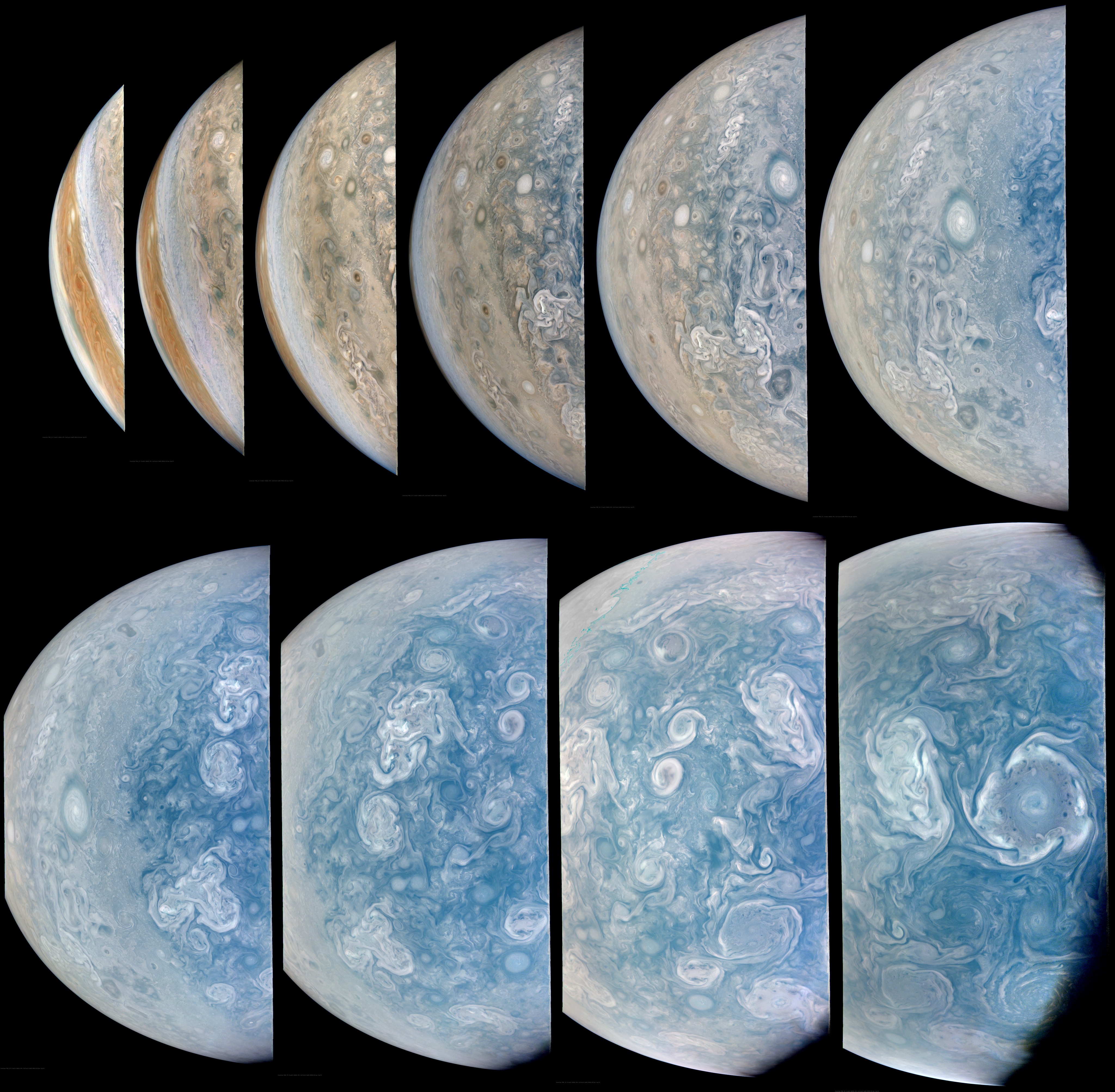The devil works fast, but citizen scientists are definitely faster when it comes to turning data from the Juno mission into beautiful images. The NASA spacecraft conducted its latest close passage to Jupiter – or perijove, in scientific lingo – on October 23, and the most stunning photos have already been uploaded on the Junocam website.
This was Juno’s 66th perijove. Each one of these close flybys has added a wealth of knowledge to our understanding of Jupiter’s atmosphere, its faint rings, and even its moons. The latest among them is the multiple encounters with Io. This meeting between the spacecraft and the largest planet in the Solar System does not disappoint.
A different image of increased color and contrast shows the different portions of Jupiter seen by Juno this time around.
The images rendered so far by passionate citizen scientists highlight the swirliness of the clouds in the Jovian atmosphere. Some images purposely increase the contrast between the different filters of collected light from the planet – so instead of the most muted cappuccino tones, the swirling at higher latitudes is extremely accentuated.
These images are very important. While they are not a representation of what a human close to Jupiter would see, they show just how complex, variable – and, most importantly, turbulent – the atmosphere of the gas giant actually is.
A different view of Jupiter’s swirliness during Perijove 66
Big and small vortices are clearly visible, some interacting with each other, others standing alone, stubbornly going on their own way. Part of Juno’s mission is to understand the atmosphere of Jupiter in all of its aspects. The pictures are not just works of art – they have great scientific value.
There’s more to Juno than just atmospheric observations. It is studying the planet as a whole: its gravity to better understand what goes on inside Jupiter, its exceptional magnetic field, and even testing general relativity using this massive world. And the mission has still more to give.
Juno has been orbiting Jupiter for more than 3,000 days. In February, the length of its orbit around Jupiter was dropped from 38 days to 33, roughly one flyby a month. The mission will have 10 more flybys ahead of itself before its end. In September 2025, the spacecraft will be purposely crashed into Jupiter, putting a fiery end to this exceptional mission – but the science and the photos will be worked on for decades to come.
Source Link: Juno’s Latest Flyby Of Jupiter Shows Amazing Swirling Storms
